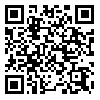Tue, Oct 21, 2025
[Archive]
Volume 17, Issue 2 (June 2021)
IJEEE 2021, 17(2): 1862-1862 |
Back to browse issues page
Download citation:
BibTeX | RIS | EndNote | Medlars | ProCite | Reference Manager | RefWorks
Send citation to:



BibTeX | RIS | EndNote | Medlars | ProCite | Reference Manager | RefWorks
Send citation to:
Shayeghi H, Pourjafar S, Sedaghati F. A Buck-Boost Converter; Design, Analysis and Implementation Suggested for Renewable Energy Systems. IJEEE 2021; 17 (2) :1862-1862
URL: http://ijeee.iust.ac.ir/article-1-1862-en.html
URL: http://ijeee.iust.ac.ir/article-1-1862-en.html
Abstract: (4863 Views)
This work introduces a new non-isolated buck-boost DC-DC converter. Interleaved configuration of the suggested structure increases the voltage conversion ratio. The voltage rate of the suggested converter can be stepped-up and stepped down for lower values of duty-cycle, which causes to decrease in the conduction losses of the system. The voltage conversion ratio of the recommended structure is provided with low maximum voltage throughout the semiconductor elements. Additionally, utilizing only one power switch facilitates converter control. Using a single power MOSFET with small conducting resistance, RDS-ON, increases the overall efficiency of the recommended topology. To verify the performance of the presented converter, technical description, mathematical survey, and comparison investigation with similar structures are provided in the literature. Finally, a laboratory scheme with a 100W load power rate at 50 kHz switching frequency is carried out to demonstrate the effectiveness of the proposed converter.
Full-Text [PDF 2861 kb]
(3075 Downloads)
- High voltage conversion ratio in both step-up and step-down modes;
- Existence of zero voltage switching (ZVS) for the power diode, which decrease the regenerative diode reverse;
- Lower peak voltage through the semiconductors;
- Low size, volume, and cost.
Type of Study: Research Paper |
Subject:
Electronic Components Technology
Received: 2020/04/22 | Revised: 2020/06/10 | Accepted: 2020/06/17
Received: 2020/04/22 | Revised: 2020/06/10 | Accepted: 2020/06/17
| Rights and permissions | |
 |
This work is licensed under a Creative Commons Attribution-NonCommercial 4.0 International License. |









